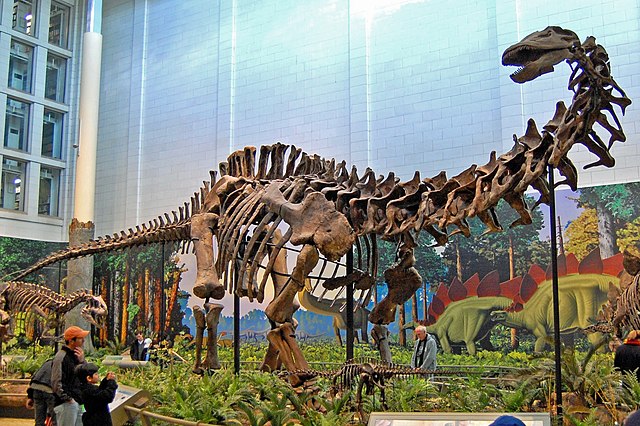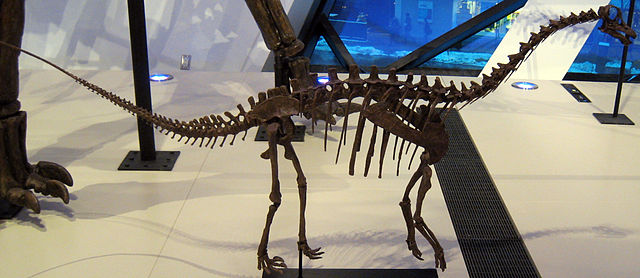Vulcanodon is an extinct genus of sauropod dinosaur from the Early Jurassic of southern Africa. The only known species is V. karibaensis. Discovered in 1969 in Zimbabwe, it was regarded as the earliest-known sauropod for decades, and is still one of the most primitive sauropods that has been discovered. As a quadrupedal, ground-dwelling herbivore, Vulcanodon already showed the typical sauropod body plan with column-like legs and a long neck and tail. It was smaller than most other sauropods, measuring approximately eleven metres (36 ft) in length. Vulcanodon is known from a fragmentary skeleton including much of the pelvic girdle, hindlimbs, forearms, and tail, but lacking the trunk and neck vertebrae as well as the skull.
Plastic model of a herd in the JuraPark in Solec Kujawski, Poland
Artist's impression of an individual
Sauropoda, whose members are known as sauropods, is a clade of saurischian ('lizard-hipped') dinosaurs. Sauropods had very long necks, long tails, small heads, and four thick, pillar-like legs. They are notable for the enormous sizes attained by some species, and the group includes the largest animals to have ever lived on land. Well-known genera include Apatosaurus, Argentinosaurus,
Alamosaurus, Brachiosaurus, Camarasaurus, Diplodocus, and Mamenchisaurus.
Sauropoda
Reconstruction of Ampelosaurus
Some sauropods, such as Alamosaurus sanjuanensis, formed herds segregated by age.
Cast of Toni, a juvenile brachiosaurus (restored as a diplodocid)






